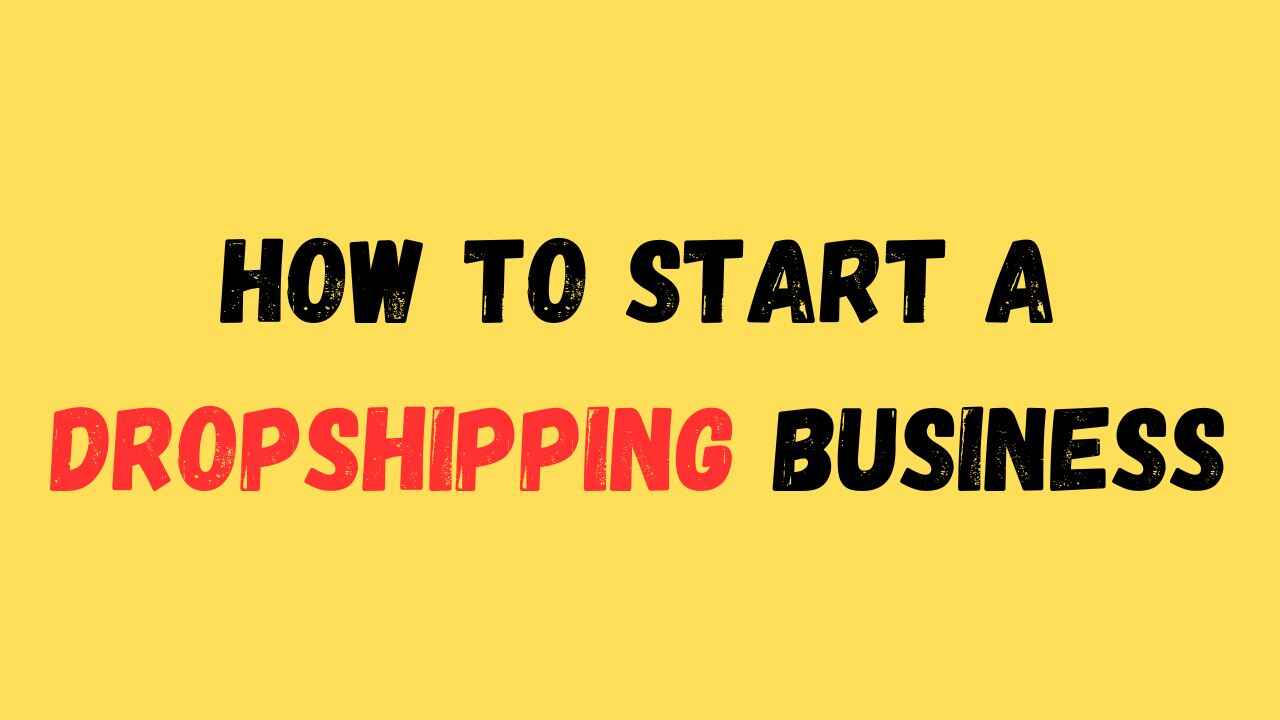How to Start a Dropshipping Business ? – Dropshipping has emerged as a popular and low-risk way to start an ecommerce business. With minimal upfront investment and the ability to sell products without holding inventory, it’s no wonder that many entrepreneurs are drawn to this model. If you’re considering starting a dropshipping business but aren’t sure where to begin, this comprehensive guide will walk you through the process step by step.

1. Introduction to Dropshipping
What is dropshipping?
Dropshipping is a retail fulfillment method where a store doesn’t keep the products it sells in stock. Instead, when a store sells a product, it purchases the item from a third party and has it shipped directly to the customer. As a result, the merchant never sees or handles the product.
Why start a dropshipping business?
Dropshipping offers several advantages, including low startup costs, the ability to sell a wide range of products without inventory risk, and the flexibility to operate from anywhere with an internet connection.
2. Choosing a Niche
Researching profitable niches
To succeed in dropshipping, it’s essential to choose a niche with sufficient demand and profit potential. Conduct market research to identify trending products and niche markets with less competition.
Assessing competition
Evaluate the competition within your chosen niche. Look for gaps in the market where you can differentiate your business and provide unique value to customers.
3. Market Research
Identifying target audience
Understand your target audience’s demographics, preferences, and pain points. This knowledge will inform your product selection and marketing strategies.
Analyzing market trends
Stay informed about industry trends, consumer behavior, and emerging markets. Use tools like Google Trends and social media insights to identify opportunities and adapt your business accordingly.
4. Finding Reliable Suppliers
Researching suppliers
Choose reputable suppliers with a track record of reliability and quality. Look for suppliers who offer competitive prices, fast shipping, and excellent customer service.
Evaluating product quality and shipping times
Order samples from potential suppliers to assess product quality firsthand. Additionally, inquire about shipping times and policies to ensure timely delivery to your customers.
5. Setting Up Your Online Store
Choosing a platform
Select an ecommerce platform that meets your needs and budget. Popular options include Shopify, WooCommerce, and BigCommerce.
Designing your store
Create a visually appealing and user-friendly online store that reflects your brand identity. Customize your store’s design, layout, and navigation to enhance the customer experience.
6. Optimizing for SEO
Keyword research
Identify relevant keywords and phrases related to your products and niche. Incorporate these keywords into your product descriptions, titles, and meta tags to improve search engine visibility.
On-page optimization
Optimize your website’s pages for search engines by optimizing titles, headings, images, and URLs. Focus on providing valuable content that addresses your audience’s needs and interests.
7. Marketing Your Dropshipping Business
Social media marketing
Utilize social media platforms like Facebook, Instagram, and Pinterest to promote your products and engage with your audience. Create compelling content, run targeted ads, and leverage influencer partnerships to increase brand awareness and drive traffic to your store.
Influencer partnerships
Collaborate with influencers in your niche to reach a larger audience and build credibility. Partner with influencers who align with your brand values and have an engaged following that matches your target demographic.
Email marketing
Build an email list of subscribers and send regular newsletters, promotions, and updates to keep your audience engaged and informed. Personalize your email content and segment your list to deliver relevant messages to different segments of your audience.
8. Managing Operations
Order fulfillment
Streamline the order fulfillment process to ensure efficient and accurate order processing. Communicate effectively with your suppliers and implement systems to track orders and inventory levels.
Customer service
Provide excellent customer service to build trust and loyalty with your customers. Respond promptly to inquiries, address concerns, and resolve issues to ensure a positive shopping experience.
9. Scaling Your Business
Automating processes
Automate repetitive tasks and processes to free up time and resources for growth and expansion. Use ecommerce tools and software to automate order management, inventory tracking, and marketing campaigns.
Expanding product range
Diversify your product offerings to appeal to a broader audience and increase revenue streams. Continuously evaluate market trends and customer feedback to identify new products and opportunities for expansion.
10. Measuring Success
Key performance indicators (KPIs)
Track key metrics like sales, conversion rate, average order value, and customer acquisition cost to measure the success of your dropshipping business. Use analytics tools to gain insights into your performance and make data-driven decisions.
Analytics tools
Utilize analytics tools like Google Analytics, Facebook Insights, and Shopify Analytics to monitor website traffic, customer behavior, and sales performance. Use these insights to optimize your marketing strategies and improve your overall business performance.
11. Common Challenges and How to Overcome Them
Dealing with supplier issues
Communicate openly and transparently with your suppliers to address any issues or concerns promptly. Establish clear expectations and agreements upfront to minimize misunderstandings and disputes.
Handling customer complaints
Listen to customer feedback and take swift action to resolve any complaints or issues. Provide empathetic and proactive customer service to turn negative experiences into positive ones and retain customer loyalty.
12. Legal and Tax Considerations
Business registration
Register your dropshipping business with the appropriate authorities and obtain any necessary licenses or permits. Consult with legal and tax professionals to ensure compliance with local regulations and tax obligations.
Tax obligations
Understand your tax obligations as a dropshipping business owner, including sales tax, income tax, and international

Leave a Reply